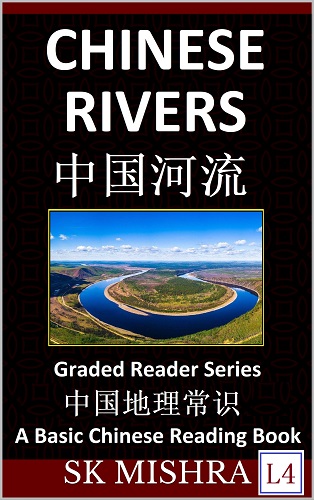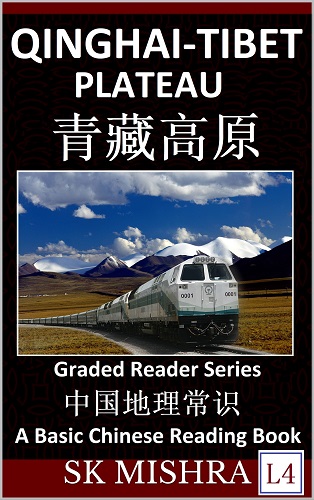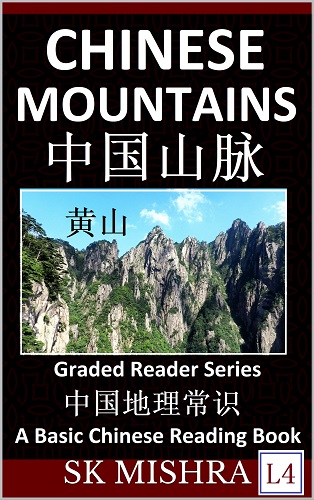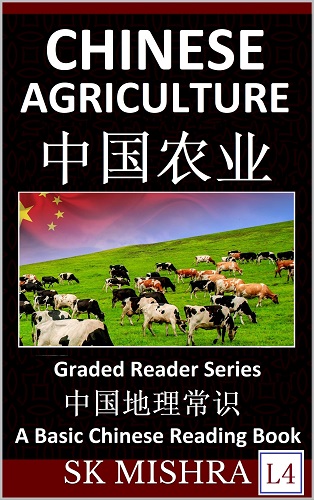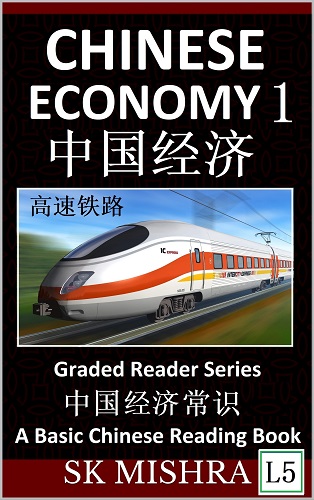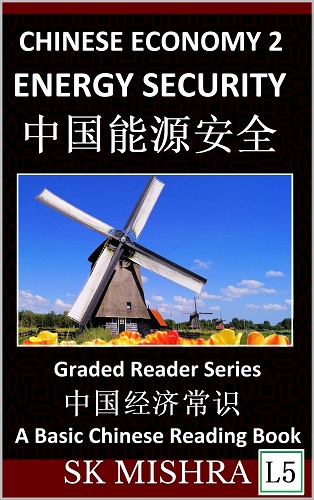So you’ve been learning Mandarin Chinese? Great! How many characters you already know? Did you finish reading Level 3 (Mandarin Chinese Culture Series) books? Well, we are about to start learning Chinese Geography (Level 4 books) and Economics (Level 5). In this blog-post, I am going to recommend you a set of books (simplified characters with pinyin) to learn Chinese geography and economics. So, I hope you’ve finished reading the Level 3 books! However, if you are totally a beginner; no offence, you are strongly recommended to begin with learning those mysterious Chinese characters at the earliest:
Once you have gone through a few of hundred characters, understand Mandarin radicals and feel comfortable with character structures, start doing reading practice ASAP. The more reading you do, the better you’ll be able to remember/understand Chinese characters and sentences.
Moreover, before you jump to Level 4 (Chinese Geography Series) books, make sure you are confident with the initial level books:
Learn Chinese Language and Culture
Here are some of the related books/resources to learn Chinese language fast:
- Level 1: Chinese Reading Books (Chinese Elementary/Primary School Education Series)
- Level 1: Chinese Reading Books (Chinese Short Story Series, 500+ characters)
- Level 1: Chinese Reading Books (Journey to the West Series, 600 characters)
- Level 2: Chinese Reading Books (Biographies of China’s Famous Personalities, 600 characters)
- Level 2: Chinese Reading Books (Chinese Reading Comprehension, 600+ characters)
- Level 2: Chinese Reading Books (Chinese History Series, 900 characters)
- Level 3: Chinese Reading Books (Chinese Culture Series, 1000 characters)
- Level 4 & 5: Chinese Reading Books (Chinese Geography and Economy Series, over 1000 characters)
- Level 6: Chinese Reading Books (Chinese Classical Literature Masterpieces, about 1300 characters)
Now it’s time to do Chinese reading practice with Level 4 books!
Level 4: Chinese Geography Reading Books with Pinyin
Here is the list of books to learn Chinese geography (Mandarin reading practice book series). You may also want to check out the author’s home page. For readers in Japan, please click here Amazon Japan.
Chinese Ethnic Groups
China has been a unified multi-ethnic country since ancient times. After the founding of New China, a total of 56 ethnic groups were identified by the central government. Since the Han nationality (汉族) has the largest population in China and the other 55 ethnic groups have a smaller population, the latter is customarily referred as the ethnic minorities (少数民族). According to China’s sixth census in 2010, the Han population account for 91.51%; the population of various ethnic minorities stands at 8.49%. Compared with the fifth national census in 2000, the Han population increased by 5.74%; the population of various ethnic minorities increased by 6.92%. China’s ethnic minorities are mainly distributed in Inner Mongolia, Xinjiang, Ningxia, Guangxi, Tibet, Yunnan, Guizhou, Qinghai, Sichuan, Gansu, Liaoning, Jilin, Hunan, Hubei, Hainan and other provinces and autonomous regions. The province with the most ethnic group in China is Yunnan Province (云南省). Among the 56 ethnic groups spread across China, 52 could be found in Yunnan, among which there are 26 ethnic groups with a population of 5,000 or more.
- Paperback (ISBN 9798887341200): Amazon
- Paperback (ISBN 9798887341200): Barnes & Noble
Qinghai-Tibet Plateau
Qinghai-Tibet Plateau (青藏高原) is the world’s highest plateau. With an average altitude of 4,000 meters, the plateau is also known as the Roof of the World (世界屋脊) and Third Pole (第三极). The Plateau is about 2800 kilometers long from east to west, and 300 to 1500 kilometers wide from north to south. Qinghai-Tibet Plateau, with a total area of about 2.5 million square kilometers, includes all of the Tibet Autonomous Region of China, and parts of Qinghai Province, Xinjiang Uygur Autonomous Region, Gansu Province, Sichuan Province, Yunnan Province, Bhutan, Nepal, Pakistan, Afghanistan, Tajikistan, Kyrgyzstan, etc. Another important feature of the Plateau is its numerous lakes. These lakes are mainly replenished with ice and snow from the surrounding mountains. Most of these lakes are inland saltwater lakes, which are rich in salt, borax, and thenardite, and many lakes are also rich in fish. There are large green grasslands around lakes, mountain basins, and gentle slopes, so this Plateau is an important pastoral area next to Inner Mongolia and Xinjiang. The Plateau is also the birthplace of many gigantic rivers in Asia.
- Paperback (ISBN 9798887341217): Amazon
- Paperback (ISBN 9798887341217): Barnes & Noble
Chinese Geography: Overview
China is located in the east of Asia and the west coast of the Pacific Ocean. China’s land area is about 9.6 million square kilometers. It ranks third in the world after Russia and Canada, and is almost the same area as Europe. In fact, Chinese territory has a longitude of more than 60 degrees from east to west, spanning 5 time zones, and a distance of about 5,200 kilometers from east to west. The north-south span of Chinese territory is nearly 50 degrees, and the north-south distance is about 5,500 kilometers. China’s mainland coastline is more than 18,000 kilometers long, and there are many excellent harbors along the coast, which are convenient for ships to shelter and dock. There are more than 5,000 Chinese islands, most of which are located in the waters south of the Yangtze River estuary. The largest archipelago in China is the Zhoushan Islands, which is located in the sea east of Zhejiang Province. No wonder, China is a very diverse country with all types of geographical features such as the lofty mountains, rivers, lakes, deserts, forests, grasslands, etc.
- Paperback (ISBN 9798887341156): Amazon
- Paperback (ISBN 9798887341156): Barnes & Noble
Chinese Rivers
China is one of the countries with the most rivers in the world. China has so many long rivers. Among them, there are more than 1,500 rivers with a drainage area of more than 1,000 square kilometers. Chinese rivers, according to the circulation pattern of river runoff, include outflow rivers that flow into the ocean, and inflow rivers that are not connected to the ocean. China’s rivers are unevenly distributed, with both inflow and outflow areas. These rivers are not only an important part of China’s geographical environment, but also rich in natural resources.
- Paperback (ISBN 9798887341163): Amazon
- Paperback (ISBN 9798887341163): Barnes & Noble
Chinese Mountains
China is a mountainous country. According to statistics, the area of mountains, hills and plateaus accounts for 69% of the total land area of the country. There are so many mountains in China. In particular, the sacred mountains have all been important destinations for pilgrimage. The Five Sacred Mountains in China (五岳, Wuyue) is the collective name of the five famous mountains in Chinese culture. Specifically, Wuyue refers to Taishan (泰山), Huashan (华山), Hengshan (衡山), Songshan (嵩山), and Hengshan (恒山). Wuyue is a place of prosperity in Chinese culture. The four famous mountains of Chinese Buddhism are Wutai Mountain (五台山), Putuo Mountain (普陀山), Emei Mountain (峨眉山), and Jiuhua Mountain (九华山). With the introduction of Indian Buddhism, the four famous mountains have continued to build temples and monasteries since the Han Dynasty in China.
- Paperback (ISBN 9798887341170): Amazon
- Paperback (ISBN 9798887341170): Barnes & Noble
Chinese Agriculture
During the last few centuries, China’s agriculture development process witnessed many inventions and innovations that were ahead of the rest of the world. However, China also experienced a long period of stagnation due to recurrent famines, wars and imperialism. After the founding of the People’s Republic of China in 1949, the abolition of the semi-feudal and semi-colonial system and the establishment of the socialist system, China’s rural economy has been rapidly restored and developed. Moreover, Chinese agriculture has ended its stagnant history and entered a new period of rapid development. Although there have been setbacks in the development process over the past 30 years, China has fed almost one-fifth of the world’s population with only 7% of the world’s arable land. Since the reform and opening up, China’s agricultural education and scientific and technological undertakings have also flourished, which has greatly promoted the improvement of China’s agricultural productivity.
- Paperback (ISBN 9798887341187): Amazon
- Paperback (ISBN 9798887341187): Barnes & Noble
Level 5: Chinese Economics Reading Books with Pinyin
Chinese Economy 1: General overview
After the founding of the People’s Republic of China, through large-scale reforms in a planned manner, China has become one of the world’s largest economic powers with a huge development potential, and its people’s lives have generally reached a well-off level. From 1953 to 2016, China has successively completed twelve Five Year Plans (五年规划) and achieved double digit growth rate, laying a solid foundation for the development of the national economy. Before 1978, the Chinese economy had a weak agricultural foundation and an imbalance in the proportion of light and heavy industries. The economic reforms and opening up in 1978 have enabled the Chinese economy to gain faster growth than ever before. After entering the 21st century, China’s economy continues to maintain steady and rapid growth.
- Paperback (ISBN 9798887341224): Amazon
- Paperback (ISBN 9798887341224): Barnes & Noble
Chinese Economy 2: Energy Security
The world today is witnessing an unprecedented level of globalization with a high degree of “interdependence” among the nations, especially when it comes to the production, supply and consumption of oil and gas. The giant Asian economies like China and India are highly dependent on foreign regions such as North America and Middle East for their ever-growing demand for oil. China’s “sensitivity” to energy security issues is high, but China has the ability and channels to cope with the extreme situations of supply shortages or even “supply interruptions”. Moreover, although China’s energy demand and supply system is not “fragile”, it is still highly “sensitive”. In 2017, China’s crude oil consumption was nearly 600 million tons and imports exceeded 400 million tons. The dependence on crude oil on foreign countries was close to 70%; natural gas consumption was nearly 240 billion cubic meters, imports were more than 90 billion cubic meters, and natural gas dependence on foreign countries exceeded 40%. Increasing external dependence, deteriorating geopolitics, and the huge pressure of national foreign exchange reserves have led China’s energy sector and government officials to address the issue of “energy security” as a key strategic issue again. Is the problem really that serious? What kind of information about China’s energy security situation do we need to communicate to the world?
- Paperback (ISBN 9798887341231): Amazon
- Paperback (ISBN 9798887341231): Barnes & Noble
I will regularly update the list, so do stop by, at least once in a while!
To sum up, Mandarin Chinese is arguably one of the most difficult languages to learn. However, if you learn smartly, you can indeed learn Chinese much faster. Although the road to learning Chinese is certainly not an easy one, it’s absolutely worth it!
Once you have done enough reading practices, you will be able to read any random piece of Chinese manuscript.
That’s all in this post about How to Learn Chinese Culture by Reading Practice Books. If you have any question about learning Mandarin Chinese, traveling, living or working in China, do let me know in the comments! Feel free to post in our forum so that others could also contribute and learn. For regular updates like us on Facebook, or follow on Twitter!
If you find the write-ups useful, don’t forget to buy me a beer!
Wish you a great time learning Mandarin Chinese!
Cheers!
Last updated: Tuesday, May 21, 2024
